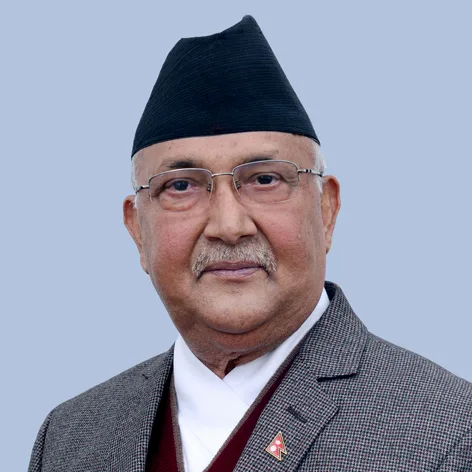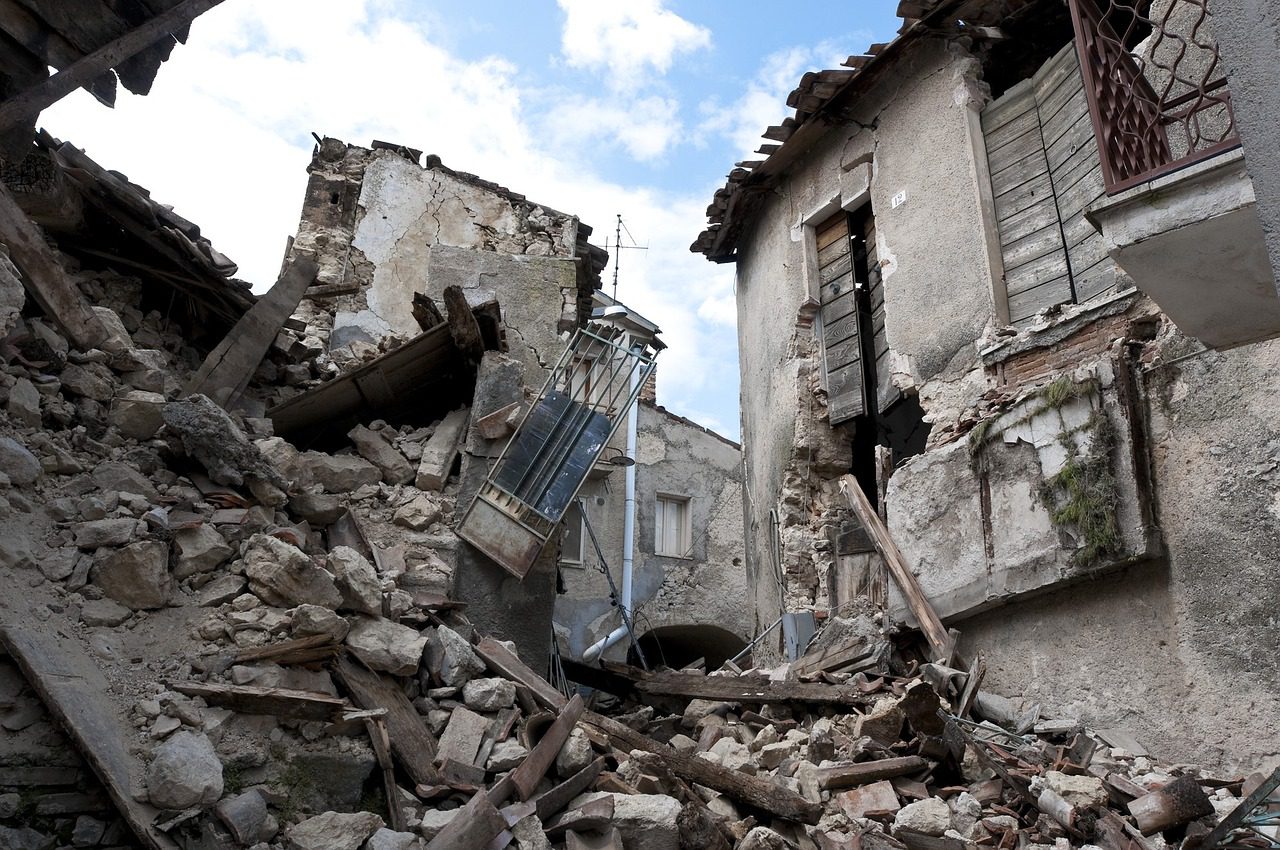In the ever-evolving political landscape of Nepal, former Prime Minister KP Oli remains a polarizing and influential figure. Despite his longstanding prominence, recent developments have raised critical questions about his ability to navigate emerging challenges. This comprehensive analysis examines three clear signs that suggest KP Oli is increasingly apprehensive about the current political scenario in Nepal. These include the rising demand for a monarchical revival, controversies surrounding black money, and growing internal party fragmentation accompanied by shifting voter sentiment.
Drawing on extensive research, expert analyses, and recent news reports, this blog delves deep into each of these issues. We provide a detailed exploration of how each factor poses a significant threat to Oli’s political standing, and what these challenges could mean for the future of Nepal’s governance. In the process, we reference authoritative external sources such as BBC News, Al Jazeera, and Reuters, as well as insightful internal discussions on Kalika Blogs.
Note: The opinions expressed in this blog are entirely my personal views, derived from my research and analysis, and are not intended to serve as definitive proof of any claims made.
Introduction
KP Oli has long been a key player in Nepalese politics, celebrated by supporters for his decisive leadership and criticized by opponents for various controversies. However, the current political climate presents new challenges that threaten to erode his influence and legacy. This blog examines three significant areas of concern that point to KP Oli’s growing fears:
- Rising Monarchy Demand and Strained Relations with Prachanda: As calls for a return to a monarchical system grow louder, KP Oli finds himself increasingly isolated by political adversaries, including former ally-turned-rival Prachanda.
- Controversies Over Black Money: Ongoing allegations of financial improprieties not only expose vulnerabilities in his governance record but also invite widespread legal and public scrutiny.
- Internal Party Fragmentation and Shifting Voter Sentiment: The internal discord within his own party, coupled with an evolving electorate that demands transparency and accountability, further undermines his authority.
Each of these elements is not isolated; they interact in ways that compound the challenges facing KP Oli, contributing to a broader narrative of uncertainty in Nepal’s political future.
Sign 1: Rising Monarchy Demand and Tense Relations with Prachanda
The Resurgence of Monarchical Sentiments
One of the most striking indicators of KP Oli’s apprehension is the rising call among some segments of the Nepali population for a return to the monarchy. This movement is not just about nostalgia—it is driven by the perception that a strong, centralized authority could restore national unity and provide stability in a time of political fragmentation.
Recent opinion pieces in reputable sources like The Kathmandu Post and The Himalayan Times have highlighted how the resurgence of monarchical sentiments is reflective of deep-seated public disillusionment with current governance. The argument is straightforward: in an era marked by political deadlock and economic uncertainty, the idea of a unifying figure—a king who embodies Nepal’s historical and cultural identity—appears increasingly attractive.
For KP Oli, this growing sentiment is a double-edged sword. While it challenges the foundational principles of a democratic republic, it also signifies a potential shift in power dynamics that could marginalize his political narrative. The internal debates on platforms such as Kalika Blogs reveal that the demand for a monarchical return is not a fringe opinion but a reflection of a broader desire for change among segments of the population.
Turbulent Ties: KP Oli and Prachanda
Complicating matters further is KP Oli’s deteriorating relationship with Prachanda, another heavyweight in Nepalese politics. Once considered allies in the pursuit of political change, the two leaders have grown increasingly estranged. Their discord is significant because it not only disrupts the possibility of forming a united opposition but also deepens political divisions across the country.
Prachanda’s criticisms of KP Oli’s handling of various political and economic issues have resonated with many voters, further eroding trust in Oli’s leadership. The rivalry between these two leaders is emblematic of a broader ideological conflict: while KP Oli’s camp emphasizes continuity and gradual reform, Prachanda’s supporters are calling for more radical changes to address corruption and mismanagement.
Internal discussions on Kalika Blogs have pointed out that this rift between KP Oli and Prachanda not only weakens their individual positions but also creates an environment where extremist voices can gain traction. The public’s growing interest in a monarchical system can be partly attributed to the failure of these two major political figures to forge a coherent, unified vision for Nepal’s future.
Sign 2: Controversies Over Black Money
Financial Mismanagement and Its Implications
Another key factor that indicates KP Oli’s growing fear is the ongoing controversy over allegations of black money and financial mismanagement. Over the past few years, reports by global news outlets such as Reuters and BBC News have underscored the challenges of tackling corruption in Nepal. These reports have not only put a spotlight on systemic issues within the country’s political framework but also indirectly implicated figures like KP Oli.
The term “black money” refers to funds that are generated through illegal means and are typically not reported for taxation. In the context of Nepalese politics, any association with such activities raises serious questions about a leader’s integrity and competence. For KP Oli, the controversy over black money represents a direct threat to his public image and political credibility. Allegations of financial impropriety create an environment of mistrust and cast a long shadow over his achievements, regardless of his other contributions.
The financial irregularities have led to multiple legal challenges and media investigations, further fueling public discontent. In a society where calls for transparency and accountability are becoming louder, KP Oli’s association with black money is particularly damaging. Such controversies not only invite legal scrutiny but also provide ammunition to his political opponents, who leverage these issues to question his capacity to govern effectively.
Public and Legal Scrutiny
Legal challenges related to black money are not just procedural hurdles—they are indicative of a broader societal shift towards demanding accountability from public officials. In recent times, judicial bodies in Nepal have been more proactive in investigating allegations of corruption. The increased institutional scrutiny means that any historical or ongoing financial mismanagement linked to KP Oli is likely to be revisited under the new governance norms.
Public opinion is equally unforgiving. In a digital age where information spreads rapidly, allegations of corruption quickly gain traction on social media and independent news platforms. The resulting media storm further compounds the negative impact on KP Oli’s reputation. Articles in prominent newspapers and online portals have extensively covered the issue, amplifying the public’s demand for a clean and transparent political system.
Moreover, these controversies also have international repercussions. Global news agencies, including Al Jazeera, have reported on the challenges faced by Nepal in curbing corruption, often linking these issues to broader regional trends. For KP Oli, this international spotlight adds another layer of pressure, as his actions and decisions are subject to both domestic and global scrutiny.
Sign 3: Internal Party Fragmentation and Shifting Voter Sentiment
Erosion of Party Unity
Internally, KP Oli is facing significant challenges from within his own political party. Party fragmentation is emerging as a major concern, with various factions vying for control and influence. This internal disunity not only hampers effective decision-making but also creates a leadership vacuum that can be exploited by opposition parties.
For decades, KP Oli managed to command loyalty and discipline within his ranks, but recent developments suggest that this cohesion is weakening. Disagreements over policy directions, leadership style, and resource allocation have led to splinter groups forming within his party. Such fragmentation undermines the party’s ability to present a united front and execute long-term strategies effectively.
Political analysts have noted that the internal discord is symptomatic of broader systemic issues. In an era where political accountability is paramount, any sign of disunity can have far-reaching implications. The weakening of party unity is particularly concerning for KP Oli because it directly affects his ability to implement his vision for Nepal. Without a strong, consolidated support base, his political maneuverability is significantly reduced, leaving him vulnerable to both internal challenges and external political rivals.
Changing Public Opinion and Shifting Voter Sentiment
Alongside internal party issues, shifting voter sentiment further complicates KP Oli’s political standing. The electorate in Nepal is undergoing a transformation. Younger voters and those from marginalized communities are increasingly demanding transparency, progressive reforms, and ethical governance. This shift in voter preference is a direct reflection of the broader dissatisfaction with traditional political structures.
Recent surveys and public opinion polls have indicated a decline in support for established political figures who are seen as part of an outdated system. KP Oli, with his long and controversial political career, finds himself at a disadvantage in this changing landscape. Voters are now more likely to support candidates who promise to address corruption, improve governance, and deliver tangible benefits to their communities.
This sentiment is not just a statistical trend—it is also reflected in the media and public discourse. Social media platforms and independent news websites have provided a voice to those demanding change, amplifying criticisms of established leaders. As a result, KP Oli’s political base is slowly eroding, and his ability to mobilize support is diminishing.
Internal party dynamics, combined with the broader shift in voter sentiment, create a precarious situation for KP Oli. The internal fragmentation undermines his leadership, while the changing preferences of the electorate signal that the public may be ready to embrace a new political paradigm—one that emphasizes transparency, accountability, and progressive governance.
Linking the Challenges: A Complex Web of Uncertainty
The three key issues—rising monarchical sentiments, controversies over black money, and internal party fragmentation—are not isolated phenomena. They are deeply interconnected, each exacerbating the other to create a complex web of challenges for KP Oli.
- Monarchical Resurgence and Political Rivalries:
The growing appeal of a monarchical system is, in part, a reaction to the perceived failures of current democratic leadership. KP Oli’s inability to bridge the gap with other political figures like Prachanda further fuels this narrative. When prominent leaders are seen as divided and unable to form a cohesive alternative, the electorate becomes more receptive to radical changes such as the return of the monarchy. For deeper insights into this dynamic, readers can explore discussions on Kalika Blogs. - Financial Controversies and Public Distrust:
Allegations related to black money add to the public’s skepticism regarding KP Oli’s governance. Financial mismanagement not only damages his personal reputation but also undermines the credibility of his party. When financial scandals emerge, they create an environment where internal divisions are more easily exploited by opposition forces, accelerating the fragmentation within his ranks. - Fragmentation and the Erosion of Support:
As party members break away and voters shift their allegiance to new political alternatives, KP Oli’s leadership is further weakened. This internal disintegration makes it challenging to present a unified stance on critical national issues, reinforcing the electorate’s desire for change. Voters tired of fragmented politics are more likely to support reformist agendas that promise greater accountability—a sentiment that is increasingly evident in recent public opinion trends.
The Impact on Nepal’s Political Future
The implications of these challenges extend far beyond KP Oli’s personal political fortunes. They signal a broader transformation in Nepal’s political landscape—one that is increasingly characterized by demands for ethical governance, accountability, and unity.
Reconfiguring Political Alliances
The fragmentation within KP Oli’s party is a microcosm of the larger political realignment occurring in Nepal. As traditional alliances crumble, new coalitions are emerging that promise to deliver a fresh approach to governance. These emerging alliances often emphasize transparency, inclusive decision-making, and responsiveness to public needs. The ability of political leaders to navigate these changes will determine the future direction of the country.
The Role of Media and Public Discourse
The media plays a critical role in shaping public opinion. Investigative reports and opinion pieces by reputable sources like Reuters and BBC News have brought issues like corruption and internal discord to the forefront of public debate. This increased scrutiny reinforces the demand for change and puts additional pressure on established leaders like KP Oli to adapt to the evolving expectations of the electorate.
The Growing Demand for Transparency
Modern Nepalese society is increasingly intolerant of opaque governance. In an era of digital connectivity, citizens have access to real-time information and are quick to demand accountability. The controversies surrounding KP Oli—whether related to financial mismanagement or internal party conflicts—serve as a catalyst for broader calls for transparency. Political reform in Nepal is no longer a matter of internal party politics alone; it is a national imperative that resonates with the aspirations of a diverse and dynamic population.
Recommended External Sources:
- BBC News – Asia Politics: In-depth coverage of political developments in Asia, including Nepal.
- Al Jazeera – Nepal: Provides comprehensive news and analyses on Nepalese politics.
- Reuters – Global Politics: Offers timely updates on financial and political trends impacting global markets, including Nepal.
Recommended Internal Sources from Kalika Blogs:
- Is Prachanda Afraid About King’s Return?: Explores the dynamics between KP Oli and Prachanda, and the political implications of a monarchical revival.
- What’s Former King Gyanendra Cooking?: Provides insight into the growing appeal of the monarchy in Nepal.
- Could Nepal Bring Back the Crown Monarchy?: Analyzes public sentiment towards the monarchical system and its potential impact on current political structures.
By linking to these trusted sources, readers can explore further details and obtain a broader understanding of the issues discussed in this article.
Conclusion and Future Outlook
The challenges facing KP Oli in today’s Nepalese political landscape are multifaceted and deeply intertwined. The rising demand for a return to the monarchy, ongoing controversies over black money, and internal party fragmentation collectively signal a profound shift in the country’s political dynamics. These factors are not only indicators of KP Oli’s personal apprehensions but also reflective of a broader societal desire for change.
As the political landscape continues to evolve, KP Oli’s ability to navigate these challenges will be critical in determining his future role in Nepal’s governance. The erosion of public trust, coupled with intensified internal disputes, suggests that his days as a dominant political force may be numbered unless significant reforms are undertaken.
Looking ahead, Nepal is at a crossroads. On one hand, the public demands greater transparency, accountability, and unity; on the other, entrenched political figures struggle to adapt to these new realities. The outcome of this political transformation will not only impact KP Oli’s legacy but will also shape the future direction of Nepal—a future that many hope will be defined by ethical governance and inclusive development.
In summary, the three clear signs that KP Oli is afraid—rising monarchical sentiments, controversies over black money, and internal party fragmentation coupled with shifting voter sentiment—paint a vivid picture of a political landscape in flux. These challenges underscore the urgent need for political renewal and reformation in Nepal, and they invite all stakeholders to reflect on the kind of future they envision for the nation.
For further insights and a more in-depth analysis of these critical issues, readers are encouraged to explore the related articles on Kalika Blogs, which offer additional perspectives on the evolving political narrative in Nepal.
Final Thoughts
In an era where political stability and ethical governance are paramount, the signs of apprehension in KP Oli’s political journey are both significant and telling. The intertwined challenges of a rising call for monarchy, financial controversies, and internal party disintegration are shaping a new narrative—one where the electorate is less tolerant of past missteps and more demanding of a transparent, united leadership.
As Nepal moves forward, the current political upheavals present both risks and opportunities. For KP Oli, addressing these challenges head-on, implementing much-needed reforms, and working towards bridging internal divides will be essential if he is to retain any semblance of influence in the country’s future.
This comprehensive analysis has provided a detailed look at the three core areas where KP Oli’s fears are most evident. By understanding these issues, stakeholders and observers alike can better grasp the complexities of Nepal’s political dynamics and the transformative changes that lie ahead.




